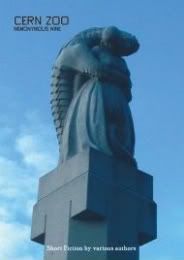Hollis Hampton-Jones, Comes the Night (2011)
 Hollis Hampton-Jones’s second novel is a study of nineteen-year-old Meade Harden: bulimic, addicted to prescription drugs, and unhealthily obsessed with her twin brother, Ben Ho. Born in Nashvile, the Harden twins are currently in Paris, where their studies – Meade’s in cookery and Ben’s in art – are being funded by their parents. Concerned that she may be losing her brother’s attention to a girl he met at college, Meade takes up an offer from a fashion photographer, Majid, to get her into the world of modelling – but her downward spiral only continues.
Hollis Hampton-Jones’s second novel is a study of nineteen-year-old Meade Harden: bulimic, addicted to prescription drugs, and unhealthily obsessed with her twin brother, Ben Ho. Born in Nashvile, the Harden twins are currently in Paris, where their studies – Meade’s in cookery and Ben’s in art – are being funded by their parents. Concerned that she may be losing her brother’s attention to a girl he met at college, Meade takes up an offer from a fashion photographer, Majid, to get her into the world of modelling – but her downward spiral only continues.
Naturally enough, Comes the Night is very much focused on the character of Meade and her concerns; this has its drawbacks – Meade’s constant returning to the same few topics can become wearying. Yet, at the same time, there are some brutally effective moments, such as when Meade lists the contents of her own vomit as the ingredients of a recipe; and the tight focus on the protagonist’s subjectivity leads to some interesting disorientation – the novel’s sense of place is fragmented, for example, because Meade is so uninterested in the outside world. Comes the Night is a short novel which arrives, does what it does with a single-minded determination, then ends in what by then may be the only possible place.
Links
Hollis Hampton-Jones’s website
Some other reviews of Comes the Night: For Books’ Sake; Bookmunch.
Gary Fry, Abolisher of Roses (2011)
Having read and reviewed (and enjoyed) the first and third titles from Spectral Press, I now skip back for the second; however, I’m not as impressed with this tale as I was with the others. Peter, a successful businessman, travels with his wife Patricia to a gallery in the wilds of North Yorkshire, where some of her paintings are set to form part of an outdoor art trail. Peter has little time for art, or the arty types with whom his wife now associates; but he indulges Patricia’s hobby as something he’s sure she’ll soon get over – and anyway, Peter has his mistress to keep him occupied. Whilst following the art trail, Peter loses his way, and comes across some strange and macabre installations which hit closer to home than he could ever have anticipated.
The key weakness of Abolisher of Roses, I think, is that it could do with a bit more subtlety. Peter is portrayed in quite broad terms as a callous and uncaring businessman who’s contemptuous of his wife; it feels as though Gary Fry is signposting rather too heavily what we’re supposed to think of Peter. I appreciate the elegance of the story’s conceit, that Peter’s begrudging examination of art turns into a searching examination of himself; but I feel that the telling lets it down somewhat.
Link
Gary Fry’s website
Christopher Wakling, What I Did (2011)
 Chris Wakling’s latest novel is narrated by six-year-old Billy Wright, who runs off one day while he’s out with his dad Jim. Eventually catching up with Billy as he runs out into a busy road, an exasperated Jim smacks the boy; a passing woman sees this, intervenes, and reports Jim to social services – and so the Wrights’ ordinary family life begins to unravel.
Chris Wakling’s latest novel is narrated by six-year-old Billy Wright, who runs off one day while he’s out with his dad Jim. Eventually catching up with Billy as he runs out into a busy road, an exasperated Jim smacks the boy; a passing woman sees this, intervenes, and reports Jim to social services – and so the Wrights’ ordinary family life begins to unravel.
Billy’s narrative voice is a mixture of rambling, malapropisms, and references to the natural world (he loves watching David Attenborough programmes). For example:
I also have to warn you that nobody is bad or good here, or rather everyone is a bit bad and a bit good and the bad and good moluscules get mixed up against each other and produce chemical reactions.
Did you know cheetahs cannot retract their claws? (p. 2)
Over the course of a whole novel, this can be endearing and infuriating by turns; but it works both as a means of establishing Billy’s character, and as a screen between us and the real action of the story. Through that screen, we see that Jim is a loving father, but also that he can have a quick temper, without necessarily even realising. It’s a combination of these factors which makes the situation so difficult for Jim, because as far as he’s concerned, he has done nothing wrong; but it’s not easy for him to see how to present himself in a way that will convince the authorities of that. In its own way, the social-care system which Jim encounters seems just as opaque to him as the adult world is to Billy. What I Did is an effective portrait of innocently-intended actions spiralling out of control, and the difficulties of responding to that.
Links
Christopher Wakling’s website
Some other reviews of What I Did: Just William’s Luck; Isabel Costello; Random Things Through My Letterbox.
 Nemonymous, that annual extravaganthus of unattributed fiction curated by
Nemonymous, that annual extravaganthus of unattributed fiction curated by
Recent Comments